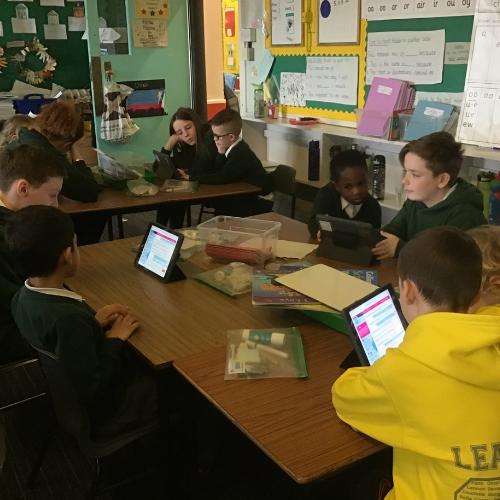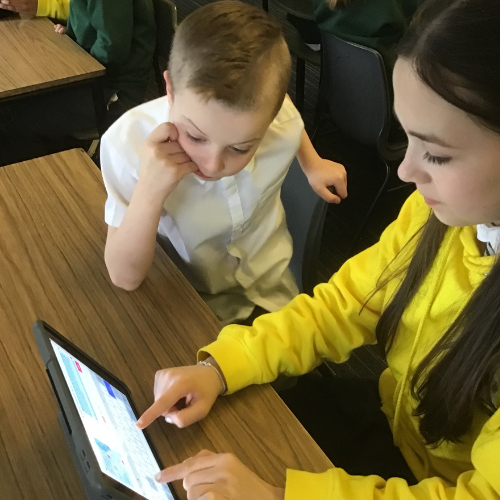Teachers Moira and Michele implemented a buddy system for multiple year groups to take part in I’m a Scientist.
It had hugely positive outcomes for both older and younger students.
Moira MacLeod and Michele Reilly, teachers at St Bridget’s Primary School in Glasgow, have been taking part in I’m a Scientist with their older students for years. Moira says when she started teaching younger year groups, “I thought, How could we get the younger ones involved? It’s so beneficial but it’s a bit quick for them. I spoke to Michele and said, How would you feel if we buddied up?”
Michele and Moira partnered up their classes. Across 4 Chats, P7s (roughly 10 to 11 year olds) were buddied up with students in P2, P3, and P4.
Promoting responsible mentorship
Both teachers noticed positive outcomes for their P7 students. Michele says that the buddy system “extends the students’ idea of what a responsible citizen really is, as well as their science literacy.”
Older students developed their social skills and moral understanding as they put their young buddies first. Michele explains: “They’re reading questions out. They’re talking with the younger children. They’re listening. They’re trying to think about what makes a good question. They’re negotiating and suggesting ways to re-word questions. They have that responsibility.”
“And I have noticed the children’s ability to question has got much better over the course of the year,” Michele adds.
Moira agrees: “Sometimes the younger children couldn’t think of questions. Rather than have silence, I could hear the older children reading the scientists’ profiles, and trying to guide them to the questions they wanted to ask.”
“It’s so important for their personal development as older pupils, and building their confidence for secondary school.”
As part of Scotland’s Curriculum for Excellence, school students of all ages should be able to talk about topical science. While this can be challenging for 5- and 6-year olds, Moira says that I’m a Scientist is “a way to ask questions that were in their heads about topical science. They were able to talk to cutting-edge scientists in that field and ask the questions that they felt were relevant.”
Meanwhile, primary students are encouraged to think about their future careers as part of the Scottish government’s Developing the Young Workforce initiative. “Obviously the idea of having a Chat with a scientist is amazing in itself,” Michele says, “but I felt that my children are starting to think, I never thought about that, could I do something like science?
“One girl, after speaking with forensic scientists, was like: Oh my goodness, this is so interesting. It was like her mind was blown. It’s just trying to give them more ideas and more suggestions.”
What’s next?
Both teachers say they’ll do it again. Moira says: “We’re just delighted. The Health Zone was great because the students could see how it’s relevant to them. And every year there’s more and more Zones.
Other teachers in our school will say, Oh my goodness, the children were full of it this afternoon when I came back to class, telling me about the scientists. Feedback like that would suggest that they would be interested in teaming up with older classes to do it!”




